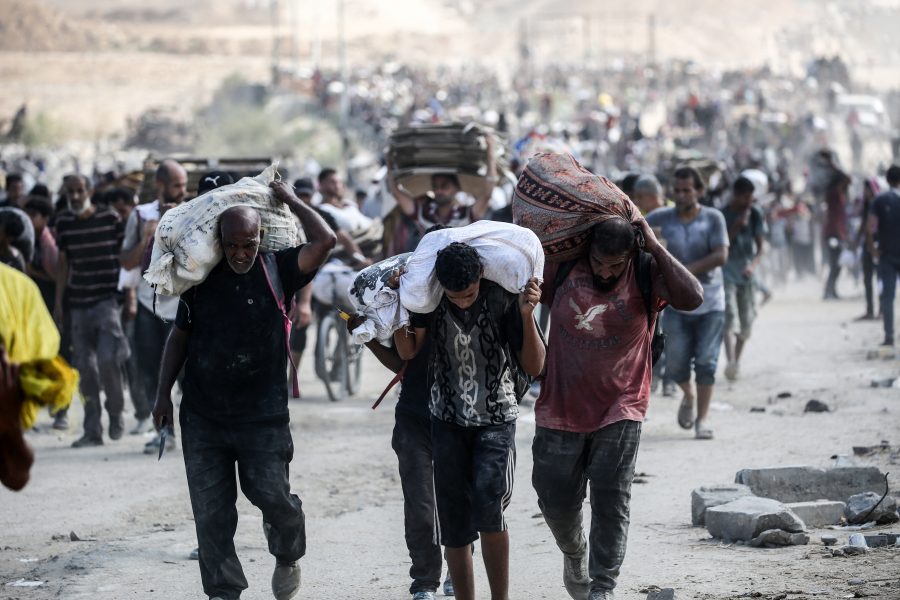
By Maximillian Otto
The United States has long been the world’s breadbasket in times of crisis, proudly shipping millions of tons of food abroad each year. But what if our generosity is sometimes doing more harm than good?
I argue that U.S. food aid, when delivered without regard to conflict dynamics on the ground, can unintentionally make civil wars longer and deadlier. The solution is clear: the United States must adopt a conflict-sensitive food aid delivery protocol; one that times and targets aid based on real-time data and local conditions, not on surplus cycles or shipping contracts.This may sound like common sense. Yet under current U.S. law, food aid is primarily sourced from domestic surplus and shipped on American vessels, thanks to the 1954 Food for Peace Act. That might make sense from an agricultural or political perspective, but it ignores a hard truth: when aid becomes predictable and poorly timed, it can become a weapon.
Research by economists Nathan Nunn and Nancy Qian shows that U.S. food aid significantly increases the likelihood and duration of civil conflicts, particularly in fragile states. When large shipments arrive on schedule, armed groups often divert or tax the aid, using it to strengthen their control or disrupt local economies. The presence of aid also changes the calculus of conflict, creating new incentives for violence along aid routes or among groups trying to control distribution.This isn’t just theory. Countries like South Sudan, Somalia, and Yemen, some of the largest recipients of U.S. food aid, have all experienced these dynamics firsthand. Predictable food shipments flowing into unstable areas become assets to fight over, not just supplies to survive on.
What’s maddening is and how fixable this problem is.
In my opinion there is a practical, low-cost solution: a joint USDA-USAID conflict-sensitive protocol. While acknowledging the discontinuation of USAID at this point in time, I assume that the dispersion of US food aid will continue under some State Department entity due to its embedded legislative nature and its role in incentivizing domestic agriculture. This solution is not a radical overhaul but rather a smart reorganization. The plan calls for pre-shipment conflict risk assessments, flexible delivery schedules, and better use of prepositioned food stocks. These changes would allow aid to flow when it helps rather than when it harms. In simple terms, we don’t need to send less food, rather we need to send smarter food.
Some will argue this protocol adds bureaucracy or could delay shipments. But the alternative and current reality undermines peace efforts, prolongs war, and damages America’s credibility as a humanitarian leader. And reform would not dismantle current systems but instead create a more thoughtful framework through which food aid is delivered.With interagency cooperation, we can make aid delivery more nimble and more responsible.Importantly, this reform also aligns U.S. foreign assistance with the broader goals of the United Nations, even if it doesn’t directly go through UN channels. The UN’s Sustainable Development Goals (SDGs), especially SDG 2 (Zero Hunger) and SDG 16 (Peace, Justice, and Strong Institutions), are meant to guide how the global community addresses interconnected issues like food insecurity and violent conflict. Right now, our food aid policy is undermining both.
You can’t achieve Zero Hunger if food aid inflames the violence that causes starvation. And you can’t build strong institutions when aid distribution is co-opted by warlords instead of coordinated with local governance. A conflict-sensitive approach to food aid is exactly the kind of policy reform the SDGs demand: one that sees humanitarianism not in isolation, but in the context of peace and development.
If we don’t make this shift, we are feeding the very crises we claim to solve. And that’s not just ineffective policy. It’s immoral.In this time of significant shift in foreign policy priorities and an incredible disruption in American foreign aid as a whole, there is opportunity in the chaos. I hope that in its sweeping, sometimes disjointed crusade of reorganization, the Trump administration can shift the facilitation of food aid to a more responsible and effective process
About the Author
Maximillian Otto is a School of Diplomacy student who participated in the UN Field Seminar course in the Spring 2025 semester.